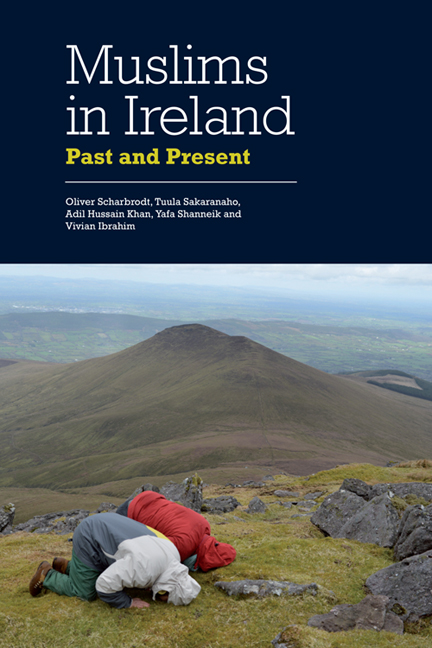Book contents
- Frontmatter
- Contents
- Figures
- Acknowledgements
- Introduction
- I History of Muslim Presence and Immigration to Ireland
- 1 Sailors, Merchants, Migrants: From the Sack of Baltimore to World War II
- 2 Muslim Immigration to Ireland after World War II
- II Mosques, Organisations and Leadership
- III The Governance of Islam in the Republic of Ireland: Freedom of Religion and Islamic Education
- IV Diaspora and Identity
- Conclusion: Being Irish, Being Muslim
- Bibliography
- Index
2 - Muslim Immigration to Ireland after World War II
from I - History of Muslim Presence and Immigration to Ireland
Published online by Cambridge University Press: 05 August 2016
- Frontmatter
- Contents
- Figures
- Acknowledgements
- Introduction
- I History of Muslim Presence and Immigration to Ireland
- 1 Sailors, Merchants, Migrants: From the Sack of Baltimore to World War II
- 2 Muslim Immigration to Ireland after World War II
- II Mosques, Organisations and Leadership
- III The Governance of Islam in the Republic of Ireland: Freedom of Religion and Islamic Education
- IV Diaspora and Identity
- Conclusion: Being Irish, Being Muslim
- Bibliography
- Index
Summary
Introduction
This chapter provides a systematic overview of Muslim immigration to the Republic of Ireland since World War II, its different stages, patterns and dynamics. The permanent presence of Muslims since the early 1950s illustrates that Ireland has been an immigration country prior to the so-called Celtic Tiger years (1995–2008), the years of rapid economic growth in Ireland, and that only the type and scope of immigration have changed since then. The different types of Muslim immigration provide a good example of this change, as one can observe a major transformation of the Muslim population from small groups of middle- and upper-class educated professionals – most of whom immigrated for educational reasons – to migrant communities from diverse socio-economic and cultural backgrounds, including labour migrants, refugees and asylum seekers.
The uses of the label ‘Muslim’ to categorise a particular group of immigrants to Ireland is problematic. Because of the actual diversity of Muslims in Ireland in terms of their ethnic, national, cultural and linguistic backgrounds, their sectarian and ideological orientations, their different degrees of religious commitment and their educational levels and socio-economic status, a ‘Muslim community’ does not exist. However, even referring to the existence of various ‘Muslim communities’ is not sufficient either. Consideration needs to be given to the reasons for investigating patterns of immigration to Ireland under a religious lens and for discussing the arrival and settlement of immigrants of a Muslim background. The danger of homogenising Muslim minorities in European contexts by an unreflective use of the label ‘Muslim’ has been addressed in the introduction to this book. The label ‘Muslim’ is used as an externally defined ‘category’ to gain empirical data on Muslim minorities and as a self-chosen identification with a ‘group’, while acknowledging its very heterogeneity and various levels of self-identification of Muslims with it.
Examining the growing Muslim population in Ireland in the sense both of a statistical category and of a social group is important in the documentation of the increasing cultural and religious diversification of Irish society and in understanding the social realities of Muslim lives in Ireland. Systematically investigating the trajectories and dynamics of Muslim immigration to the Republic of Ireland thereby provides data on the growth of this ‘new’ religious minority, its ethnic composition and socio-economic background.
- Type
- Chapter
- Information
- Muslims in IrelandPast and Present, pp. 49 - 72Publisher: Edinburgh University PressPrint publication year: 2015



